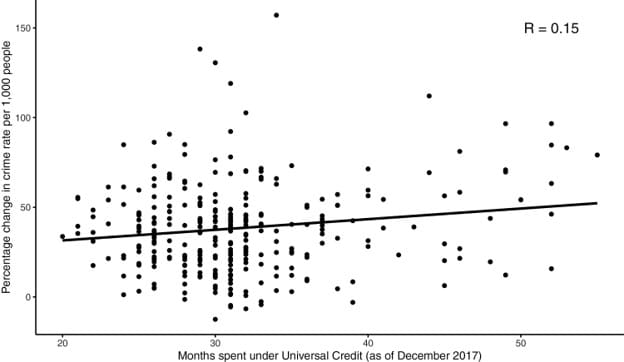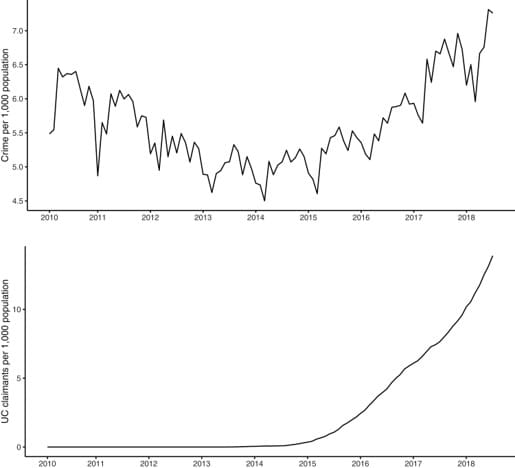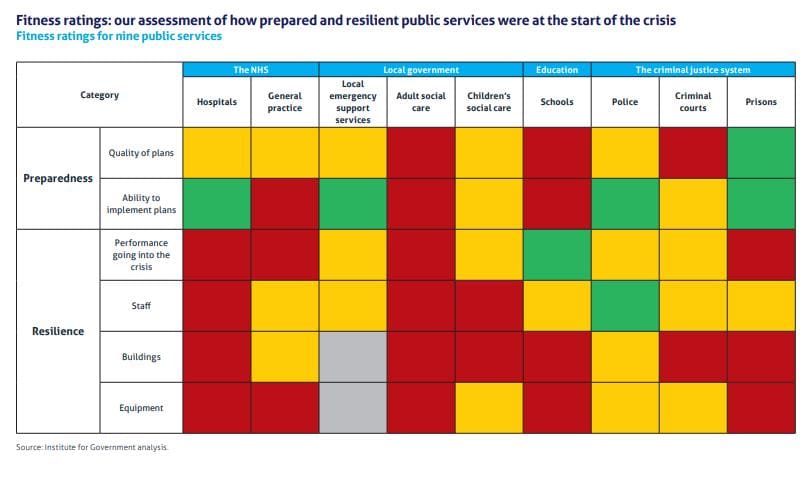Content warning: suicide (graphic), self-harm, imprisonment, transphobia, child abuse.
On Saturday 9 July – the day of London’s Trans Pride – a trans man named Taylor took his own life at HMP Eastwood Park in Gloucestershire.
Taylor slit his own throat to put an end to an indeterminate prison sentence that had already lasted over 14 years. He was one of the thousands of people still suffering in UK prisons after being given an Indeterminate sentence for Public Protection (IPP). Sadly, Taylor is reportedly the second prisoner to take their own life at Eastwood Park in recent weeks.
At least 242 IPP prisoners have died in prison, with at least 72 of them (including Taylor) taking their own lives.
On the evening of 10 July, an angry protest took place outside HMP Eastwood Park. Demonstrators accused the prison of being responsible for Taylor’s death. Loved ones gave speeches outside, and prisoners inside the walls joined in with the chants. One eyewitness said that at one point it seemed like the whole prison was chanting Taylor’s name in unison with the demonstration outside.
Beaten by officers
A statement and call to action written by his close friends claims that, in the months running up to his death, prison officers had beaten Taylor and punished him for kissing another prisoner.
During Taylor’s time in prison, his friends said he had received transphobic abuse from both prisoners and officers. They also said that one officer had deliberately and persistently “deadnamed” Taylor. Moreover, his intimate relationships with women prisoners had been pathologised and discouraged. And he had been deliberately separated from the people that he loved.
The authors of the statement spoke about who Taylor was and what he had been through:
Taylor was a trans prisoner trapped in the UK prison system for over 14 years. He was an IPP prisoner, who had served 10 years longer in prison than his original sentence. He was a beloved friend to anarchist comrades who met him in prison. He had ACAB [all cops are bastards] on his knuckles and an anti-authoritarian spirit and a deep love for animals. He was a working class ‘old school’ prisoner who knew which side he was on. He hated the system with every ounce of his being.
Taylor’s friends spoke about his organising inside prison with the Industrial Workers of the World (IWW) and against cruel IPP sentences like the one he was serving:
Taylor was one of the first prisoner members of the IWW via the Incarcerated Workers Organising Committee (IWOC) that was founded in England, Wales, Scotland and Ireland in 2015. He was also active with Smash IPP, contributing to the newsletter and encouraging other IPP prisoners to join the group.
‘A life sentence for minor crimes’
IPP prisoners are given a ‘tariff’ for the crime they’re being sentenced for, but once that tariff is served they are not automatically released. Their freedom is in the hands of the parole board. This makes IPP sentences equivalent to a life sentence, but they have largely been handed out for minor crimes.
Taylor’s friends call the IPP sentence a death sentence:
It is effectively a life sentence for minor crimes. After huge public pressure, IPP sentences were abolished in 2012, but not retrospectively, which means there are still more than 3500 people in prison with no release date. The uncertainty is a living hell. This sentence led to the UK having one of the highest rates of prisoner suicide in the world.
One contributor to a recent documentary about IPP prisoners, called Unintended Consequences, said:
the miserable reality of people on IPP sentences is there’s a very good chance that they will kill themselves. If you’re a prisoner you’re twice as likely to kill yourself as a member of the general population. If you’re an IPP prisoner you’re twice again as likely to kill yourself.
‘For Taylor, the IPP was a death sentence’
As The Canary’s Peadar O’Cearnaigh previously reported, a House of Commons justice committee was held in November 2021. Consultant forensic psychiatrist Dr Maganty gave evidence that IPP prisoners enter prison:
not severely mentally ill. But as the years have gone by, increasingly what we’re finding is they are becoming mentally ill. Their clinical presentation is increasingly akin to those who’ve been wrongfully convicted.
In Taylor’s case, his friends say that his mental health went massively downhill, due to the uncertainty whether he would ever be released:
For Taylor, the IPP was a death sentence. He was given 4 years for burglary but served 14 years before he died. The long-term imprisonment with no end-date totally destroyed Taylor’s mental health. He attempted suicide multiple times, including slitting his own throat and taking an overdose that led him to being in a coma twice. It eventually killed him.
Made to jump through hoops
In order to secure his release, Taylor had to try and satisfy the parole board. When he failed to do that, his mental health spiralled downwards. And his increasing distress was weaponised against him to keep him locked up. According to Taylor’s friends:
At each board hearing, new ‘hoops’ can be created that the prisoner will need to then jump through. For example, a prisoner might do everything the Parole Board directs and then two years later at the next hearing, the Parole Board might say “you still need to address X behaviour and therefore do X course.” This leads to a continual process of imprisonment where goal posts are repeatedly moved. The uncertainty, frustration and lack of power leads to prisoner behaviour deteriorating, whether that is increased drug use, self-harm or kicking off in protest.
This behaviour then becomes the justification for their continuing imprisonment, because that person is not ‘safe’ for the community or has not ‘addressed their offending behaviour’. The cycle continues.
Taylor’s friends say that he was kept in prison because he was suicidal, but it was his imprisonment that was making him want to die:
We have 14 years of catalogued evidence of impossible parole hearings and prison failings. Taylors suicidality was the reason he was kept in prison, yet his suicidality was caused by prison. There is only so much one human can take. Death became the only option for Taylor as all legal doors to freedom closed again and again.
A lifetime of being pathologised
Taylor had given his friends permission to publish some of the details of his life.
They write that, growing up, “Taylor was subject to years of physical, sexual and psychological abuse”. This started “an intense pattern of trauma” which “has followed him forever”. He was adopted by his grandparents, but those who abused him were still in his life.
Taylor first raised his feelings about his assigned gender with his doctor as a teenager. The doctor responded by branding him “unstable”. According to his friends:
Taylor always knew he was a man. He went to a local doctor as a young teenager and expressed his feelings and issues with his assigned gender. The doctor pathologised Taylor as ‘unstable’ and denied any access to hormones or any surgery. This was over 30 years ago and access to hormones online or other support groups was nigh on impossible. Before prison, Taylor had never met another trans person.
Taylor’s friends describe the events that led up to his IPP sentence:
The combination of childhood abuse and gender dysphoria led to drug and alcohol abuse, as well as a long-term pattern of self-harm. Taylor became an addict, and as a working class person with no financial means, “crime” was the only option to sustain his habit. This led Taylor to a very self-destructive life, including many abusive relationships and actions that he deeply regretted. Taylor accessed many mental health services, however, none of them affirmed Taylor’s gender identity or needs and he was repeatedly pathologised, hospitalised and imprisoned.
In the judges’ summing up of his case whereby he was given an IPP sentence, he recognised it was Taylor’s ‘gender issues’ that led to his imprisonment.
While Taylor was in prison, his grandparents died. His friends say that he was never able to properly process this grief.
Transphobic abuse in prison
As a prisoner, Taylor was abused by prisoners and prison officers alike:
Taylor experienced transphobic abuse in prison from officers and other prisoners. Once he was attacked by a girl on his wing in a courtyard. Thankfully, our Taylor was a fighter and defended himself. He spat back on her and said “here’s some of my gender fluid”.
Officers throughout his sentence would target him with insults, deadnaming and repeated misgendering.
Taylor’s friends said that one officer at Eastwood Park would deliberately deadname Taylor in the hope of provoking him into a reaction which would jeopardise his parole.
When he was admitted to hospital after a suicide attempt, Taylor was given access to a psychiatrist. But the psychiatric ‘care’ he received further reinforced negativity about Taylor’s gender identity and sexuality:
During sessions, Taylor was repeatedly dehumanised and encouraged to see himself as a woman. They said that relationships were a core part of his ‘offending behaviour’ and discouraged him from being with women or in relationships at all. During this intense time of vulnerability, Taylor believed the only way to ever be released from prison was to pretend to be a woman and to not have romantic relationships with women.
But Taylor later recognised this abusive psychiatric pathologisation of his identity for what it was:
Fortunately, once he had left the hospital and stopped having sessions he realised what a horrific transphobic act of institutional violence this was. One that trans people worldwide have experienced, pathologised by psychiatric authorities.
He was “blown away” by the support and care he received from the trans community worldwide. And he eventually managed to procure a binder for his chest, despite the prison’s “best efforts”.
His friends wrote:
He would speak with excitement about getting top surgery when he was out and running around half-naked on the beach and swimming in the sea. Now he will never have the chance.
Relationships deemed a ‘risk factor’
Taylor’s attraction to women was also discouraged within the prison system and was allegedly deemed a “risk factor” by the parole board. His friends say that the prison service forcibly separated him from many people he loved, including one long term partner.
Taylor’s friends say that:
Should Taylor have obtained parole at his next hearing, one condition was that he refrained from all romantic and intimate relationships. His own lawyer said he would need to comply, although we all known that closeness to other humans is a deeply necessary part of survival. We often spoke with Taylor about how the state was acting like an abusive controlling partner. He felt powerless to challenge it.
According to his friends, in the week before his death Taylor received a punishment from the prison authorities for kissing one of the women on his wing.
Violence
Taylor was getting close to being released. He had been granted Release on Temporary License (ROTL) for a few hours at a time. But his friends say that his freedom was once again sabotaged by prison officers. They wrote:
On the 20th May, Taylor was in Cabot Circus in Bristol, when the Officer responsible for supervising him abandoned him. Taylor tried to find her, but he was unable to. He had no phone or way of finding her despite looking continuously around the city. Taylor managed to report it to the prison. Instead of taking responsibility for losing Taylor, the officer who escorted Taylor into Bristol lied and claimed he went missing for a number of hours on purpose.
Taylor became angry and pushed over a plant in reception. Prison Officers then attacked him. They kicked the shit into him and dragged him to a new cell with none of his belongings. We saw Taylor days after and could see bruises all over him. Taylor was awaiting surgery for a hernia and being ‘bent up’ by officers was a life-threatening act of violence.
We put this, and all of the other allegations in this article, to the Ministry of Justice. A prison services spokesperson said:
An HMP Eastwood Park prisoner died on 9 July and our thoughts are with their loved ones at this time. The Prisons and Probation Ombudsman has been informed, as is routine for all deaths in custody. We cannot comment further while their investigation is ongoing.
‘Where is your rage?’
Taylor’s friends conclude their statement by asking their comrades “where is your rage?” against the system that killed Taylor, and calling on them to take action to abolish it. They wrote:
Taylor’s death could have been prevented. If there was more support, more resistance. If our movements were a fucking threat. If prison authorities feared us and our calls to action. We need to fight like hell for the living. We need to fight like hell for those still inside.
They say that Taylor was refused support because he was not deemed a political prisoner:
Some anarchist websites would not share our action alerts or calls for support because Taylor was not a ‘political prisoner’. Even though an understanding of class and gender oppression is a core of anarchism.
Taylor’s friends point out that “every single incarcerated person is a political prisoner”.
Their call demands militant action:
Revolutionary abolitionists in the so-called United States would risk death to liberate people from slave plantations. They started the Underground Railroad to free their families and comrades. Where is the direct action to free our friends from cages? Where is the rage when they die inside? How do we push our movements beyond canvassing for fucking jeremy corbyn????
Abolition means revolution. It means destroying the state. It means direct action. It means putting the war into class war.
‘They will face no repercussions. Unless we make them.’
Their statements concludes with these heartbreaking words:
Pools of Taylor’s blood covered his cell where he died alone. His blood covered the hands of HMP and they will face no repercussions. Unless we make them.
We call for rage everywhere. Remember Taylor. Fight with everything you have for those still in prison. No more empty slogans, this is a life and death struggle.
Featured image via Taylor’s friends (with permission)
By Tom Anderson
This post was originally published on The Canary.
pic.twitter.com/6OmJRKMTBv
(@DragStoryHourUK) August 3, 2022
 (screen shot sent to us by someone who is pledging to strike on Oct 1st).
(screen shot sent to us by someone who is pledging to strike on Oct 1st). 





 (@Reni_Von_Skwid)
(@Reni_Von_Skwid) 
 Vegan Campaign Catering
Vegan Campaign Catering 













